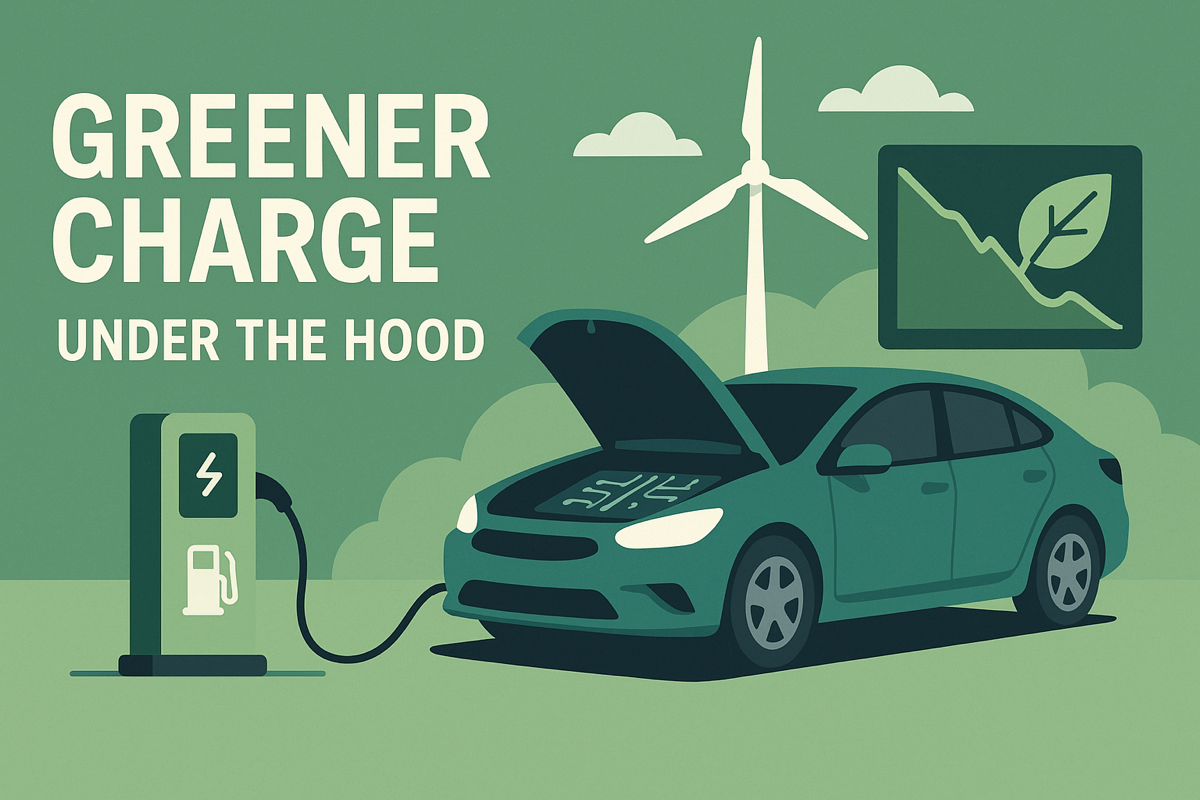At DabApps, we’re passionate about using technology to help tackle climate change. One area where small individual decisions can collectively make a significant difference is electric vehicle charging.
Recently, we launched Greener Charge – a simple tool that gives EV owners information about when to charge their vehicles to minimise carbon emissions. But what powers this tool, and how do we know it makes a difference? Let me take you through the research behind it.
The simulation: How we tested the idea
To understand the potential impact of timing your EV charging, we built a simulation model using real carbon intensity data from the National Energy System Operator (NESO) for the entire year of 2024.
Here’s how the simulation works:
The setup
- Vehicle specs: We simulated a typical electric vehicle with a 50 kWh battery (similar to a standard-range Tesla Model 3 or Nissan Leaf)
- Driving habits: We assumed 20 miles of driving each day (roughly the UK average)
- Efficiency: We used 4 miles per kWh as our assumed driving efficiency (realistic for most modern EVs)
- Starting point: The simulation began with a fully charged battery on January 1, 2024
- Carbon data: We used actual grid carbon intensity data from NESO’s API for every half-hour period throughout 2024
Two charging strategies
We compared two distinct charging approaches:
Strategy 1: Charge every night
- Drive 20 miles each day, using 5 kWh of energy
- Plug in every night, no matter what
- Top up to 100% each time
- Record the carbon emissions based on that night’s grid intensity
Strategy 2: Check Greener Charge first
- Drive 20 miles each day, using 5 kWh of energy
- Check if tonight or tomorrow night has lower carbon intensity
- If tonight is better (greener), charge to 100%
- If tomorrow is better, wait and don’t charge tonight
- Record the carbon emissions when charging occurs
Running through a year
The simulation stepped through each day of 2024, keeping track of:
- Battery state of charge
- When charging happened
- How much energy was added to the battery
- The carbon intensity of the grid at charging time
- The total carbon emissions accumulated
The results: Numbers tell the story
After running through the entire year, the difference was clear:
- Charge every night: 197.4 kg of CO₂ emissions
- Use Greener Charge: 149.3 kg of CO₂ emissions
That’s a 25% reduction in carbon emissions simply by making smarter choices about when to charge!
For Strategy 2, we also monitored how low the battery got to ensure this approach remained practical (it never fell below 40% in our simulation, even with multiple “skip tonight” decisions).
Why it works: The power of flexibility
The reason this approach is effective comes down to three factors:
- Grid variability: The UK’s electricity grid carbon intensity can vary dramatically (sometimes by 100% or more) between consecutive days, primarily due to wind generation
- Battery buffer: Most EV owners have significant spare capacity in their batteries for daily driving, so can easily choose to delay charging by a day or two
- Binary choice: By simplifying to just two options (tonight or tomorrow), we make the decision easy while still capturing significant benefits
How Greener Charge brings this to life
The website itself is deliberately simple:
- It shows you whether tonight or tomorrow night is forecast to be cleaner
- It gives you a clear recommendation: “Plug in” or “Wait until tomorrow if you can”
- It uses official National Grid forecast data, updated hourly
- It focuses on the overnight charging period (11:30pm-5:30am) when most EV owners schedule their charging
Perfect vs. practical
What makes this approach powerful is that it doesn’t require perfect behavior or significant lifestyle changes. The simulation showed that even this binary “tonight or tomorrow” choice can lead to meaningful reductions in carbon impact.
This exemplifies what computer scientists call “the power of two choices” – the idea that even having just two options, when chosen thoughtfully, can lead to dramatically better outcomes than no choice at all.
If you own an electric vehicle, we invite you to check out Greener Charge and see how this small decision can make a big difference to your carbon footprint.
